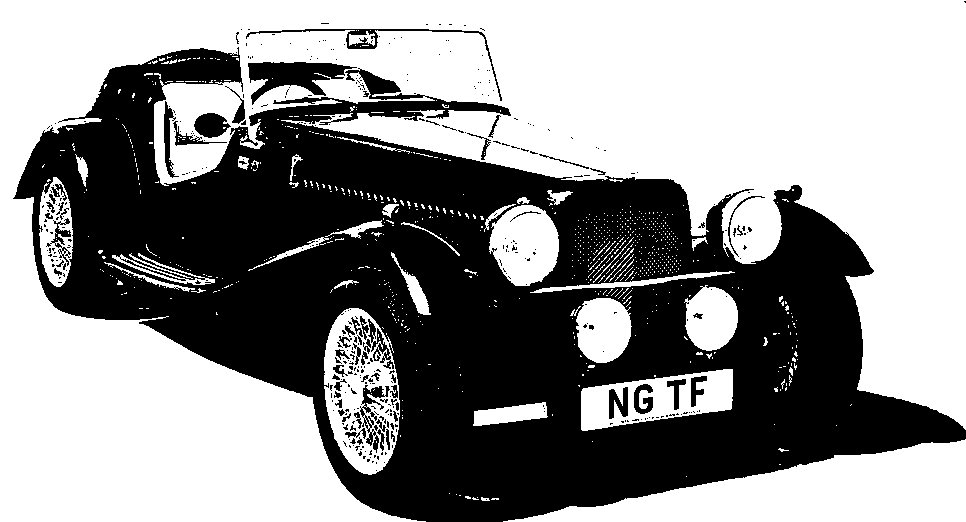
NG Kit Car
15.1 Bonnet Particulars
Centre Hinge
The supplied brass hinge (which is chromed later in the build) first has to be cut to length. It is best to take the same amount from each end otherwise the position of the bolts will look unbalanced. A 3/4" p-shaped flap is also cut from each end (without the hinge pin) and these are used with small aluminium mounting blocks to mount the hinge to the cowl and the scuttle (photo 1). Before mounting them, however, it is necessary to countersink them and round their ends as follows:
-
Countersink - the aluminium mounting blocks are countersunk with a 1/2" drill. The brass p-shaped flaps need to be formed into a countersink too. I found the best way was to use a suitable size screw head as a die and squash the 3 parts in a vice (photo 2).
-
Round - in order to satisfy SVA requirements (and to finish the hinge off nicely) a rounded end is required on each flap. A no.10 brass roundhead screw is cut about 3mm below the head and soldered/braised into the end of the flap (I used a butane soldering torch). Some filing/sanding finishes this off and a little undercut is made to clear the GRP body (photo 3).
-
Mount - the bonnet hinge has been mounted onto the cowl with the finished flap and block (photo 4, the other end is the same).
Holes must be drilled in the hinge for the bonnet top fixing screws (M4 stainless socket head bolts) and great care must be taken as they will be prominent down the centre of the bonnet. It is certainly best to dot punch all these first and use a pillar drill.
Bonnet Catches
The striker (or stud) part of the catches were bolted to the edge of the bonnet tops so that the M4 bolts did not coincide with the side panel bracket bolts. This then gives adequate clearance. After experimentation on an off-cut of GRP and careful measuring in situ, I decided that the main (sprung) catch plate would be mounted 68mm below the shut line (i.e. about 71mm below the striker plate). This provides a fairly strong pull which helps to compress the bonnet rubbers (photo 5).
The catches have a small rubber buffer which pushes rather hard against the side of the bonnet panel. So I used a new Stanley knife blade to pare a little away (photo 6) to make the catch sit more comfortably and not pop off.
A small cover was made and added to the base of each hinge as a precaution for the SVA test (see SVA Particulars).

with end pieces


trimming some rubber

with end pieces